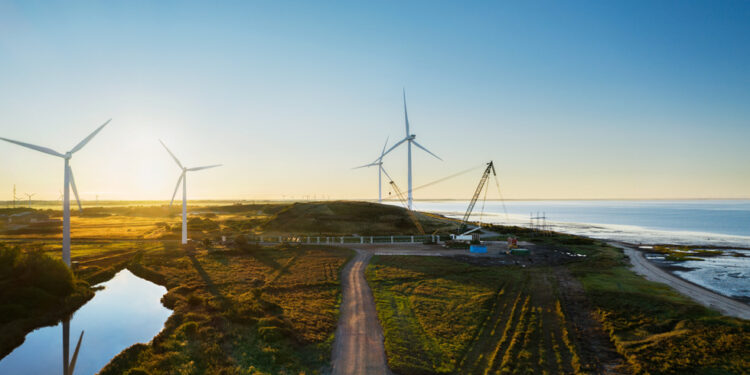To get closer to the “carbon neutrality” goal in 2030, Apple began construction of two gigantic wind turbines in Denmark.
IT giant Apple has announced that it will invest in the construction of two giant wind turbines that will be installed near the town of Esbjerg, Denmark. The turbines will be 200 meters high and will generate 62 GWh of energy each year. A record-breaking result: a common wind turbine has a height of “just” 110/115 meters and can generate 5/6 MW. The energy produced in Esbjerg will be used to power Apple’s Viborg Data Center, a 4,000-square-meter facility that offers network support and data storage to users in the area. This data center allows the operation of the App Store, Apple Music, iMessage, Siri and other services in Europe, which will then be delivered using only renewable energy. The surplus energy produced in Esbjerg will be fed into the Danish electricity grid and should be enough to supply about 20,000 homes. The new Apple turbines will also serve as a test site for powerful offshore wind farms.
You might also be interested in —> Will the Iphone replace the ID card? Apple files 5 patents
Apple is betting on wind power: it will build two of the world’s largest turbines
The wind turbines that Apple plans to install in Esbjerg will be among the largest in the world. These new renewable energy sources will enable the company to take a further step toward its goal of zero CO2 emissions by 2030. “Tackling climate change requires urgent action and a global partnership, and Viborg’s data center is proof that we can overcome this generation challenge,” said Lisa Jackson, Apple’s Vice President of Environment, Policy and Social Initiatives. “Investments in sustainable sources of energy lead to incredible innovations, which in addition to clean energy offer attractive job opportunities for businesses and local communities. This is an area where we must be at the forefront, for the sake of the environment and future generations.
Read also —> Apple leads the list of “50 most innovative companies” according to BCG

































